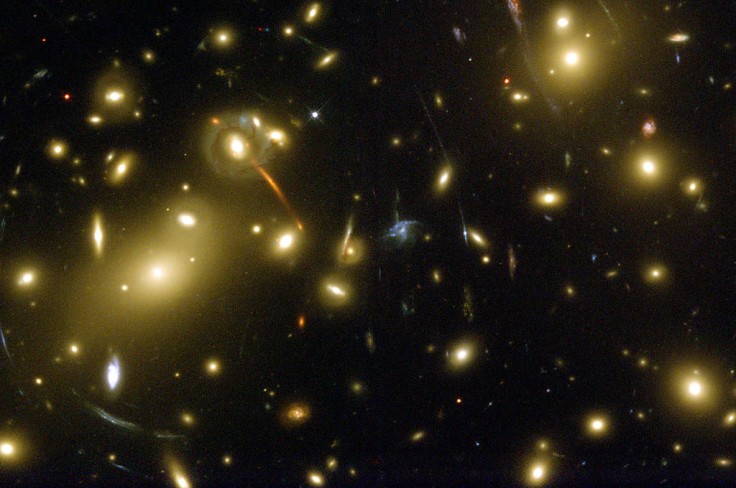
The European Space Agency got to capture a rare photo of a distant quasar using the Hubble Space Telescope. The image snapped by the space telescope captured a pair of galaxies and a far-away quasar forming an "Einstein Ring." Find out why this rare phenomenon occurs.
Hubble Space Telescope Sees Quintuple
The Hubble Space Telescope was able to capture three celestial bodies billions of light-years away, bending light to form an "Einstein Ring."
The image shows six balls of light, four of which form a circle around a pair found in the middle. However, according to the European Space Agency (ESA), those are not actually six individual galaxies but only three: two galaxies and one distant quasar.
A quasar is an extremely active and luminous type of active galactic nucleus. This galactic core has gas and dust falling into a supermassive black hole and it emits electromagnetic radiation. The gas and dust become luminous because of the extreme gravitational and frictional forces they are put under as they fall into the black hole, ESA explained.
This image is the fifth one of this particular distant quasar.
The rare phenomenon was brought about by the presence of the two galaxies in the foreground that acted as a gravitational lens. The enormous mass of the pair of galaxies caused the fabric of space to warp, bending the light traveling through space from the distant objects. It is magnified sufficiently that back on Earth, we get multiple magnified images of the same single object.
With the distant quasar's light traveling towards Earth, the mass of the two galaxies warped the light and gave the appearance of four quasars surrounding the pair.
This is called an Einstein ring, and those bright dots are not six galaxies, but three: the two in the middle of the ring, and one quasar behind it, its light distorted and magnified as it passes through the gravitational field of the two foreground galaxies. #HubbleTelescope pic.twitter.com/G2aVDOVG2K
— Dr. Shivani Saini (@sarcasticshivi) August 21, 2021
Albert Einstein Predicted 'Einstein Rings'
The gravitational lensing phenomenon was named after Einstein who predicted that gravity affects light just like it affects physical matter in 1911. The idea was then proposed to test his theory of general relativity in 1915, according to Yahoo! News.
Because gravity is the experience of space-time curving and distorting in the presence of matter and energy, the curved space sets the rules for how energy and matter move across it, Live Science explained.
Light does travel in a straight line but because certain regions of space-time are highly curved, like with the case of the massive pair of galaxies, then light travels in a curve as well. This resulted in the light bending around the galaxies, casting a halo, hence the "ring" in "Einstein Ring".
Another formation of distorted light from far-away celestial sources is the "Einstein Cross" which shows a distant galaxy appearing as for separate images around a galaxy closer to earth, however, that closer galaxy is too dim to be seen, Yahoo! News noted.
"Einstein Rings" and "Einstein Crosses" help astronomers get a closer look at galaxies much farther out into the universe that would otherwise be hidden.









